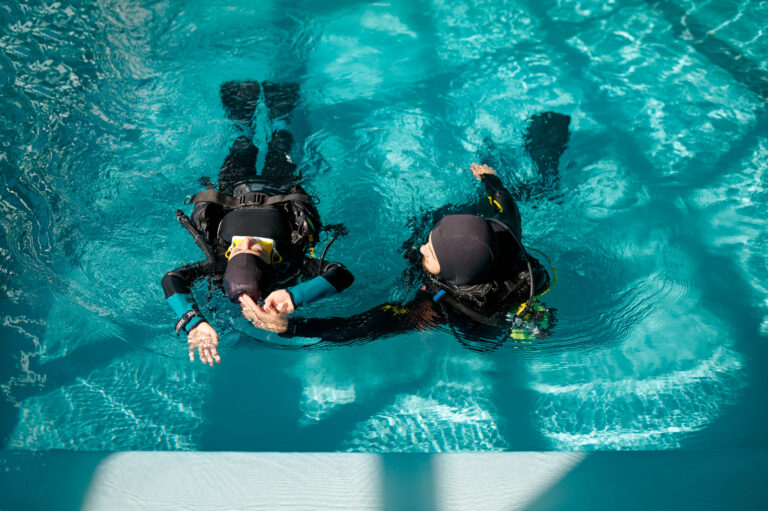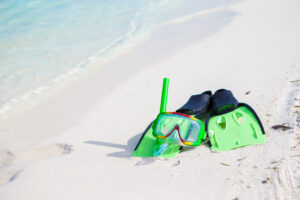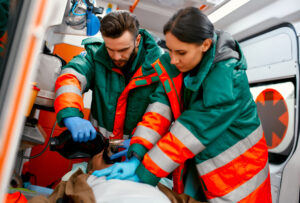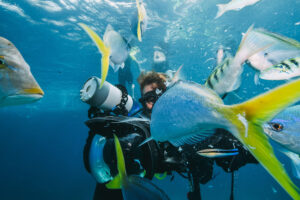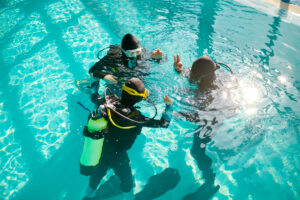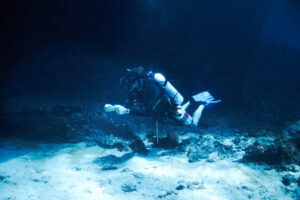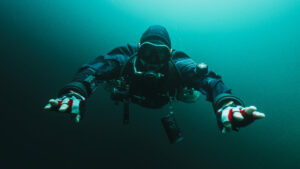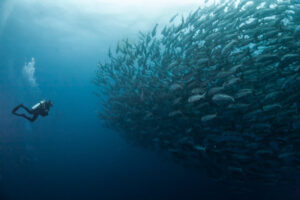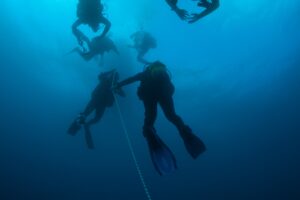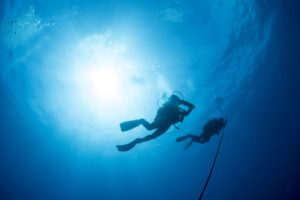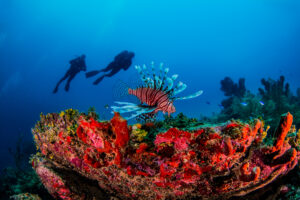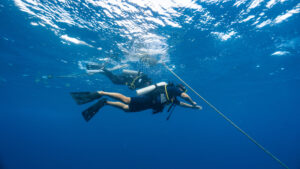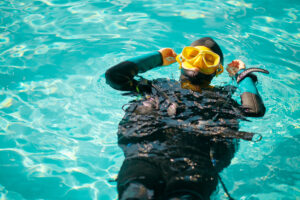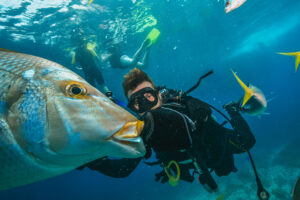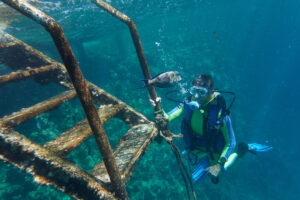What is Rapture of the Deep?
Rapture of the Deep, commonly known as nitrogen narcosis, is a condition experienced by scuba divers at significant depths. This phenomenon, resulting from the increased partial pressure of nitrogen when diving, can lead to a range of symptoms that affect cognitive and motor functions. Understanding Rapture of the Deep is crucial for divers to ensure safe practices and avoid potentially hazardous situations underwater.
Definition and Description
Rapture of the Deep, or nitrogen narcosis, occurs when the partial pressure of nitrogen increases as a diver descends. This increased pressure causes nitrogen to dissolve in the body’s tissues, particularly affecting the nervous system. The phenomenon was first described by Jacques Cousteau, who likened it to the effects of alcohol intoxication, noting its impact on a diver’s judgment and coordination.
The term “nitrogen narcosis” highlights the role of nitrogen in this condition, although other inert gases like helium can also cause similar effects under high pressure. It typically becomes noticeable at depths exceeding 30 meters (98.4 feet), though individual susceptibility can vary. The effects intensify with increasing depth, posing significant risks if not properly managed.
Unlike decompression sickness, which results from rapid ascent and nitrogen bubble formation, nitrogen narcosis occurs due to the direct effects of nitrogen under pressure. Its onset is usually gradual, allowing divers to recognize symptoms and take corrective action if trained to do so. However, the impairment of cognitive functions can sometimes hinder a diver’s ability to respond appropriately.
Physiological Causes
The physiological basis of Rapture of the Deep lies in the solubility of gases under pressure. As a diver descends, the ambient pressure increases, causing more nitrogen to dissolve into the body’s tissues. This process follows Henry’s Law, which states that the amount of gas dissolved in a liquid is proportional to the pressure of the gas. In the context of diving, the higher partial pressure of nitrogen leads to greater absorption into the bloodstream and tissues.
Nitrogen primarily affects the lipid-rich tissues of the nervous system, including the brain. The dissolved nitrogen interferes with neurotransmission, altering normal brain function. This interference can lead to a range of symptoms, from mild euphoria and a sense of well-being to severe cognitive and motor impairment. The precise mechanisms are complex and not fully understood, but they involve the disruption of synaptic transmission and neurotransmitter release.
As divers go deeper, the effects of nitrogen narcosis become more pronounced. The severity of symptoms depends on several factors, including the rate of descent, the individual’s susceptibility, and the duration of exposure. Rapid descent can exacerbate the condition, as the body has less time to adapt to the increasing pressure. Divers with higher body fat percentages may also experience more pronounced effects due to greater nitrogen solubility in lipid tissues.
Symptoms and Signs
The symptoms of Rapture of the Deep can vary widely among individuals and can change in intensity with depth. Common symptoms include a sense of euphoria or overconfidence, akin to mild intoxication. Divers might feel unusually happy and may underestimate risks, leading to poor decision-making. In some cases, anxiety or panic can occur, particularly in those who are less experienced or have pre-existing conditions.
Cognitive impairments are a hallmark of nitrogen narcosis. Divers may have difficulty concentrating, experience confusion, or find it challenging to perform simple tasks. This mental fog can be dangerous, as it affects the ability to read instruments, follow dive plans, and communicate with dive buddies. In severe cases, hallucinations and impaired judgment can lead to life-threatening decisions.
Motor skills are also affected by nitrogen narcosis. Divers may exhibit clumsiness, poor coordination, and slowed reaction times. These motor impairments increase the risk of accidents, such as becoming entangled in underwater structures or failing to manage buoyancy properly. Muscle twitching or involuntary movements can also occur, further complicating the diver’s ability to function safely.
Recognizing the signs of nitrogen narcosis in oneself and others is vital. Symptoms typically subside during ascent as the partial pressure of nitrogen decreases. However, if a diver fails to recognize and manage the condition, it can lead to serious incidents, including drowning or barotrauma.
Incidence and Risk Factors
The incidence of Rapture of the Deep varies, but it is a common experience for divers who venture beyond recreational diving limits. Professional divers, such as those in commercial or technical diving, frequently encounter nitrogen narcosis due to the depths at which they operate. Recreational divers may experience it less often but are not immune, especially during deep or prolonged dives.
Several risk factors influence the likelihood of experiencing nitrogen narcosis. Depth is the most significant factor, with symptoms typically appearing at depths greater than 30 meters (98.4 feet). However, individual susceptibility varies, with some divers experiencing symptoms at shallower depths while others may tolerate greater depths without noticeable effects. This variation can be due to differences in physiology, fitness levels, and previous diving experience.
Dive duration also plays a role, as longer exposure increases the cumulative effects of nitrogen absorption. Repeated dives over a short period, particularly those involving deep dives, can lead to a condition known as “nitrogen load,” increasing the risk of narcosis. Rapid descents exacerbate symptoms by allowing less time for the body to adapt to increasing pressure.
Environmental factors, such as cold water and strenuous physical activity, can compound the effects of nitrogen narcosis. Cold water increases nitrogen solubility, while physical exertion accelerates the absorption process. Divers should be aware of these conditions and adjust their dive plans accordingly to mitigate risks.
Comparison with Other Dive-Related Disorders
Rapture of the Deep is often compared to other dive-related disorders, such as decompression sickness (DCS) and oxygen toxicity, due to their common association with changes in pressure and gas absorption. While each condition has distinct causes and symptoms, understanding their differences is essential for effective management and prevention.
Decompression sickness, commonly known as “the bends,” occurs when dissolved gases, primarily nitrogen, form bubbles in the bloodstream and tissues during a rapid ascent. This is in contrast to nitrogen narcosis, which is caused by the direct effects of nitrogen at depth. Symptoms of DCS include joint pain, dizziness, and severe neurological impairments, which can be life-threatening if not treated promptly. Unlike nitrogen narcosis, DCS often requires medical intervention, such as recompression therapy.
Oxygen toxicity arises from the excessive partial pressure of oxygen, typically encountered during deep dives or when using high-oxygen gas mixtures. This condition affects the central nervous system and the lungs, with symptoms ranging from visual disturbances and nausea to seizures and loss of consciousness. Oxygen toxicity can be prevented by adhering to safe depth limits and using appropriate gas mixtures, while nitrogen narcosis is managed primarily through depth control and gradual ascent.
Both decompression sickness and oxygen toxicity require different preventive measures compared to nitrogen narcosis. DCS prevention focuses on slow ascents and decompression stops, while oxygen toxicity is mitigated by monitoring oxygen exposure. In contrast, nitrogen narcosis prevention involves careful depth management and recognizing early symptoms.
Management and Prevention
Managing Rapture of the Deep involves recognizing symptoms early and taking appropriate action to reduce their impact. The primary response to suspected nitrogen narcosis is to ascend to a shallower depth. As the partial pressure of nitrogen decreases, symptoms typically resolve quickly. Divers should be trained to monitor each other for signs of narcosis and communicate any unusual behavior promptly.
Prevention starts with dive planning. Divers should adhere to recommended depth limits and avoid rapid descents that can exacerbate the effects of nitrogen narcosis. Using dive computers to monitor depth and ascent rates helps in maintaining safe practices. Divers can also benefit from practicing deep dives in a controlled environment to become familiar with their individual susceptibility to narcosis.
Breathing gas mixtures play a role in managing nitrogen narcosis. Technical divers often use mixed gases, such as trimix or heliox, which include helium to reduce the proportion of nitrogen and oxygen. Helium, being less narcotic than nitrogen, helps to minimize the effects of narcosis at depth. However, these gas mixtures require specialized training and equipment.
Education and training are crucial components of prevention. Divers should undergo training that includes recognizing and managing nitrogen narcosis, understanding personal limits, and practicing emergency procedures. Regular refresher courses help to reinforce this knowledge and keep divers up to date with the latest safety protocols.
Impact on Diving Practices
The understanding of Rapture of the Deep has significantly influenced diving practices and safety protocols. Awareness of the condition has led to the establishment of depth limits for recreational divers, typically set at 40 meters (131.2 feet) to minimize the risk of narcosis. Technical divers, who operate at greater depths, follow strict guidelines and use specialized equipment to manage the risks associated with nitrogen narcosis.
Dive training organizations emphasize the importance of gradual descent and controlled ascent in their courses. Divers are taught to recognize the signs of nitrogen narcosis in themselves and their buddies, promoting a culture of safety and vigilance. The use of dive computers and depth gauges has become standard practice, providing real-time data to help divers manage their depth and exposure.
Technological advancements have also played a role in mitigating the risks of nitrogen narcosis. The development of mixed gas technologies, such as trimix and heliox, allows divers to safely explore greater depths with reduced risk of narcosis. These advancements have expanded the boundaries of underwater exploration while maintaining safety.
Professional diving operations, including commercial and scientific diving, incorporate strict protocols to manage nitrogen narcosis. Divers undergo extensive training and are equipped with advanced gear to ensure their safety. Monitoring systems and support personnel are often used to provide additional layers of safety during deep dives.
Key Takeaways
Rapture of the Deep, or nitrogen narcosis, is a condition experienced by divers at significant depths due to the increased partial pressure of nitrogen. Understanding its symptoms, physiological causes, and preventive measures is crucial for safe diving practices. Recognizing the signs early and taking appropriate action, such as ascending to shallower depths, can mitigate its effects. Through education, training, and technological advancements, the diving community continues to enhance safety and expand the limits of underwater exploration.

